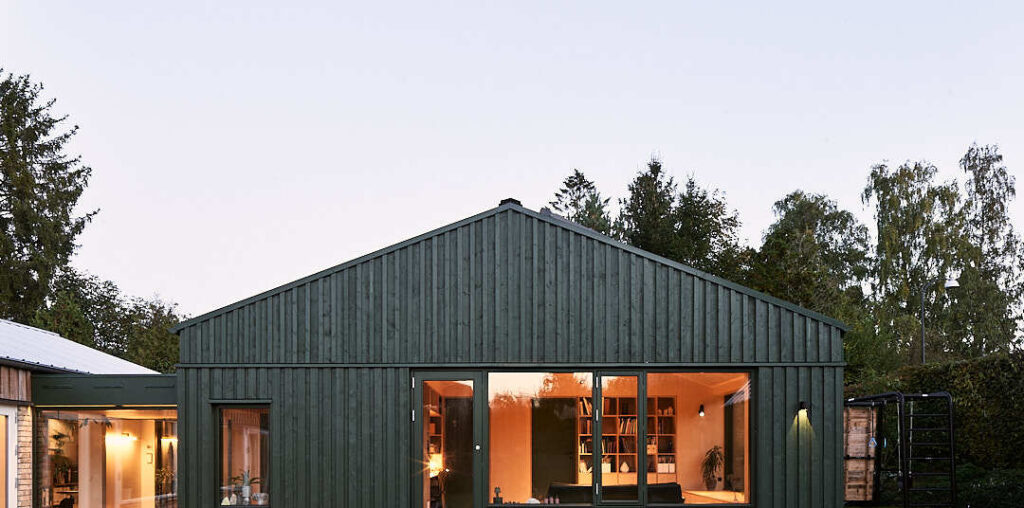

Stop Demolishing
Every year, around 1,100 single-family homes are demolished and replaced with new constructions in Denmark. Often, this does not happen due to the condition of the buildings, but because many homeowners see it as an easier and cheaper way to achieve a more modern home. However, demolition is rarely sustainable, which is why we need to rethink our existing houses, so they meet today’s housing needs and dreams.



Find the Existing Qualities
This single-family house, originally designed by architect MAA Steffen Hougaard (1967), is an example of how this can be approached. The renovation has provided the house with a new roof, extra insulation, and skylights that bring light indoors. The new extension is inspired by the house’s original geometry and design, but its green-painted wooden facade gives it an own unique character.

Daylight and Nature
Daylight and views of the garden have been essential design principles in creating a bright and open plan with strong contact with nature. Inside, each room has a pitched ceiling, giving the feeling of multiple “houses within the house.” Skylights ensure daylight and create a healthy indoor climate with natural ventilation. Several built-in furniture pieces optimize the space in both the existing house and the extension, and a large window toward the garden includes a built-in bench, allowing for a close experience of nature.

Biogenic Materials and Sustainable Solutions
All materials have been selected to reduce the project’s overall CO2 footprint. Wood has been used as the primary material. The floors are made of bamboo, while birch plywood has been used for the walls in the living areas of the extension. In addition to optimizing the house’s energy use, a buried water tank has been established to collect rainwater, which is used for toilet flushing.


The Team
The house project is designed by Jesper Kusk Arkitekter in collaboration with THKR and Regnestuen. The landscape surrounding the house has been designed by LoBe Landskab and the lighting design has been developed by Iben Winther Orton.






